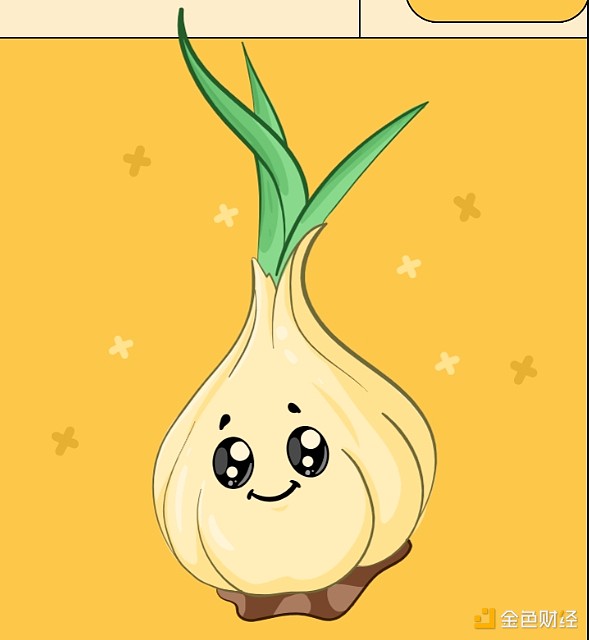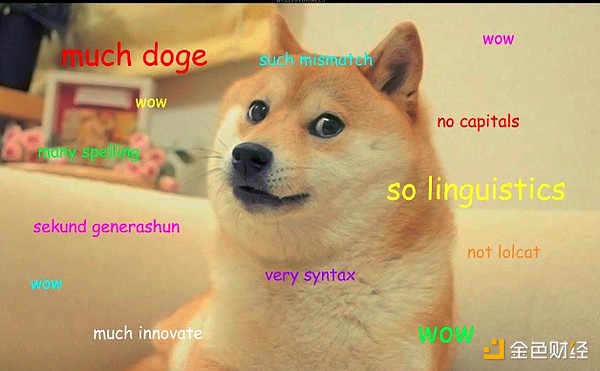Author: Aaron Wood, CoinTelegraph; Compiler: Wuzhu, Golden Finance
The cryptocurrency industry is very, very weird.
What would you expect from an industry founded by cypherpunks and embraced in its early days by privacy and cryptography idealists, software geeks, anarcho-capitalists, and disillusioned Ron Paul voters?
As cryptocurrencies evolved, it became increasingly easy to create new cryptocurrencies in the era of initial coin offerings (ICOs), and no idea was stupid or unexpected. And this was before memecoins could be created at the click of a button, leading to the birth of millions of currencies that didn't even have an idea.
While it's impossible to make an exhaustive list of all the weird crypto projects, here are some of the most popular ones:
1. Crypto Dental, Dentacoin
The Dentacoin Foundation was founded in 2017, and its eponymous cryptocurrency aims to simplify the modern dental industry. According to the Dutch project’s white paper, the Ethereum-based Dentacoin (DCN) token is supposed to be a “utility token for rewards, payments, and exchange within and beyond the dental industry.” For practitioners, the token is a means of payment for materials, equipment, and other services, while patients can earn it by taking oral health surveys, providing practitioner reviews, and tracking and maintaining their oral health practices.
The ultimate goal is to speed up medical payments, which typically take a lot of time and involve a lot of red tape.
Like many tokens with niche use cases, the DCN price spiked at launch and then flatlined. With a market cap of just $235,000 as of August 24, the project has failed to live up to its grand ambitions to disrupt the dental industry with blockchain. 2. Lovecraft Cult Uses Crypto to Worship Cthulhu Cthulhu is a monster from the horror stories of H.P. Lovecraft, an evil and terrifying "old god" whose power is beyond human comprehension. The purpose of the Cthulhu (FHTAGN) token seems equally puzzling. The token first appeared on an online forum in 2013 and seems to have no purpose other than to provide some activity and messaging for hardcore cryptocurrency and Lovecraft fans. Cthulhu emerges from the sea. Credit: Andree Wallin Forum users see FHTAGN (the code itself being a word in the unpronounceable horrific language of the ancient gods) as part of Cthulhu’s religion and mythology, with the tokens being “sacrifices”, holders being “cultists” and tokens being mined through “sacrifices”.
Cthulhu has no measurable market cap, with each token valued at $0.000032, according to the few sites that track it.
Other Cthulhu-related tokens have also emerged. The Cuter Cute Cthulu (CTHULU) token is a Solana-based project that aims to raise awareness and support related efforts for marine life and ecology.
In June, the project donated $2,000 to The Ocean Cleanup.
“In his home in R’lyeh, dead Cthulhu waits to dream.”
3. SpankChain, go google it yourself…
If cryptocurrency is the native currency of the internet, it was only a matter of time before it intersected with pornography and adult entertainment.
In June, the project donated $2,000 to The Ocean Cleanup.
“In his home in R’lyeh, dead Cthulhu waits to dream.”
3. SpankChain, go google it yourself…
If cryptocurrency is the native currency of the internet, it was only a matter of time before it intersected with pornography and adult entertainment.
SpankChain was founded during the ICO boom and received fairly positive press coverage. It aims to provide a platform for adult performers to have more control and agency over how they are paid for their work. The currency is used for payments on Spank.live. Performer Allie Awesome told Cointelegraph Magazine in 2020 that she made a small fortune through the site’s CryptoTitties app. “I like that I get to keep 100% of my payments with CryptoTitties, as opposed to losing 20% or more with a fiat payment processor,” she said, adding that “it’s been really hard to get non-crypto people to use it.” Despite promotion from prominent porn performers and millions of dollars in investment, the project hit some snags in March 2023 and has been largely stagnant since then. SpankChain had to shut down its payment processor SpankPay after the latter lost its service provider Wyre and failed to find a new one. However, according to the SpankPay X page, the project will be back soon and is already allowing users to register usernames.
4. Trump Coin Didn't Take Off
Although not always a fan of cryptocurrencies, former US President and 2024 presidential candidate Donald Trump has been present in the space in one way or another for some time. To date, there are several cryptocurrencies explicitly dedicated to Trump and purportedly supporting his return to the White House. The first, initially launched under the name Trump Coin but later renamed FreedomCoin (FREE), was launched in 2016, eight years before he publicly supported the cryptocurrency industry.
The most “successful” of these — the Solana-based TrumpCoin (DJT) — has a market cap of $1.43 million. The project has no official ties to the Trump campaign, and infamous “pharma bro” Martin Shkreli has hinted at helping to create the coin. Research firm Arkham Intelligence even offered a $150,000 bounty to anyone who could definitively prove who started the project. Rapid price action and speculation about the coin suggests it’s likely just a memecoin that taps into the hype surrounding Trump and the US election. None of the various Trump coins have an official connection to Trump’s campaign or organization. His presidential campaign does, however, accept cryptocurrency donations. Making crypto weird again.
5. Cannabis Coins
At the height of the ICO boom, the cannabis industry was no stranger to the ubiquity of custom token projects. Initially, cannabis tokens did solve a problem for the US cannabis industry.The prohibition of cannabis at the federal level meant that any bank with federal deposit insurance (pretty much any bank you wanted to do business with) would not provide services to cannabis growers, distributors, or dispensaries. Cryptocurrencies would provide a secure way for all of these parties to transact without having to use a bank or carry large amounts of cash around. PotCoin (POT), HempCoin (THC), and Cannabis Coin (CANN) all emerged as tokens to cure the industry’s ills. PotCoin even sponsored US basketball star Dennis Rodman, who wore a PotCoin shirt during his infamous trip to Singapore to meet with Trump and Kim Jong-un, which caused the price to surge.
However, as some observers have pointed out, even so, these cannabis coins have failed to offer significant advantages over more established currencies like Bitcoin. They all now have negligible market capitalizations and almost no on-chain activity. It's really depressing.
6. At least they're honest: Useless Ethereum Token
The Useless Ethereum Token (UET), as the name suggests, is useless. UET was originally created as a joke. The project's website says it has no intended use and is not designed to accumulate value. As the anonymous creator, UET CEO, told the New York Observer, “I realized that people don’t really care about the product. They care about spending a little money, looking at the charts, and then taking a little money out. So why not do an ICO with no product, do it completely transparently, just to see what happens?” According to industry media reports, the project raised $300,000 in the ICO. It’s unclear what the CEO did with the money, and the tokens aren’t listed anywhere. Really useless. 7. Garlicoin values community and…garlic Garlicoin was originally created as a joke, but still has an active community. Created in early 2018, the token is another ICO hit, with a theme of garlic and garlic bread. On the project’s website, anthropomorphic garlic heads and slices of garlic bread suggest that the network has fast and cheap transactions and is resistant to specialized mining equipment such as application-specific integrated circuits.

Garlicoin Garlic. Source: Garlicoin
The community remains strong and is highly committed to the project’s garlic-centric identity. In the project’s Discord, one member wished Garlic (GRLC) holders “Garlic mornings! Garlic afternoons! Garlic evenings!” Another user suggested a way to get more GRLC holders: “Ideas: 1. Invite ‘friends.’ 2. Everyone brings their favorite version/variety of garlic bread. 3. Everyone gets to enjoy garlic bread. Very good. 4. Give everyone who shows up a paper wallet with some GarlicCoin.” GRLC prices were largely flat, but in 2021, the token has risen along with the rest of the market.
8. A Small Step Forward in Crypto, Mooncoin
Created in 2013, Mooncoin (MOON) embodies the crypto community’s belief that their chosen coin will “go to the moon.” It is also popular among astronomy enthusiasts, with a maximum token supply of 384 million, which matches the 384,000 km distance between the Earth and the Moon. Space-themed marketing and its astronomical references have made the coin a strange favorite among holders. The platform never conducted a pre-mine or ICO and was designed to offer cheap transactions. According to Coinfi, the project has a market cap of over $6 million and a 24-hour trading volume of just $141. Failed launch?
9. The original memecoin, Dogecoin
Dogecoin was created in 2013 by software engineers Billy Markus and Jackson Palmer.

An example of the original Doge meme format. Very outdated. Very 2013. Source: All Things Linguistics
It started out as a criticism of the highly speculative nature of cryptocurrencies, and has now become the very thing its creators wanted to criticize.
As of August 20, it has a market cap of over $15 billion and a legion of fans, including eccentric tech billionaire Elon Musk.
Dogecoin inspired another dog-related currency, Shiba (SHIBA), which was founded in 2020. The pseudonymous “Ryoshi” created the coin as a tribute to DOGE, and the idea of a memecoin took off.
Since then, thousands of strangely named, highly speculative memecoins have emerged.
Thank you, Dogecoin. Stay weird, crypto.
 XingChi
XingChi
 XingChi
XingChi JinseFinance
JinseFinance JinseFinance
JinseFinance JinseFinance
JinseFinance Huang Bo
Huang Bo Davin
Davin Olive
Olive Bitcoinworld
Bitcoinworld Bitcoinworld
Bitcoinworld Beincrypto
Beincrypto